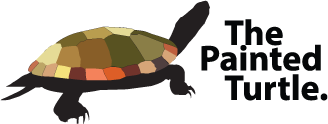
Slow but Important.
Did you know?

By Oregon Department of Fish & Wildlife [CC-BY-SA-2.0]
via Wikimedia Commons
The Painted Turtle is the most abundant turtle Species!
Conservation

By Jarek Tuszynski (Jarekt)
(Own work) [CC-BY-SA-3.0 or GFDL]
via Wikimedia Commons
The decline in painted turtle populations is not a simple matter of dramatic range reduction, like that of the American bison. Instead the turtle is classified as G5 (demonstrably widespread) in its Natural Heritage Global Rank, and the IUCN rates it as a "Least Concern" species. The painted turtle's high reproduction rate and its ability to survive in polluted wetlands and artificially made ponds have allowed it to maintain its range.

By Stephan G. (OTRS submission)
[CC-BY-SA-3.0], via Wikimedia Commons
Laws
Commercial harvesting of painted turtles in the wild is controversial and, increasingly, restricted. Wisconsin formerly had virtually unrestricted trapping of painted turtles but based on qualitative observations forbade all commercial harvesting in 1997. Neighboring Minnesota, where trappers collected more than 300,000 painted turtles during the 1990s, commissioned a study of painted turtle harvesting.
Scientists found that harvested lakes averaged half the painted turtle density of off-limit lakes, and population modeling suggested that unrestricted harvests could produce a large decline in turtle populations. In response, Minnesota forbade new harvesters in 2002 and limited trap numbers. Although harvesting continued, subsequent takes averaged half those of the 1990s.
As of 2009, painted turtles faced virtually unlimited harvesting in Arkansas, Iowa, Missouri, Ohio, and Oklahoma; since then, Missouri has prohibited their harvesting. Many U.S. state fish and game departments allow non-commercial taking of painted turtles under a creel limit, and require a fishing (sometimes hunting) license; others completely forbid the recreational capture of painted turtles. Trapping is not allowed in Oregon, where western painted turtle populations are in decline, and in Missouri, where there are populations of both southern and western subspecies. In Canada, Ontario protects both subspecies present, the midland and western, and British Columbia protects its dwindling western painted turtles.